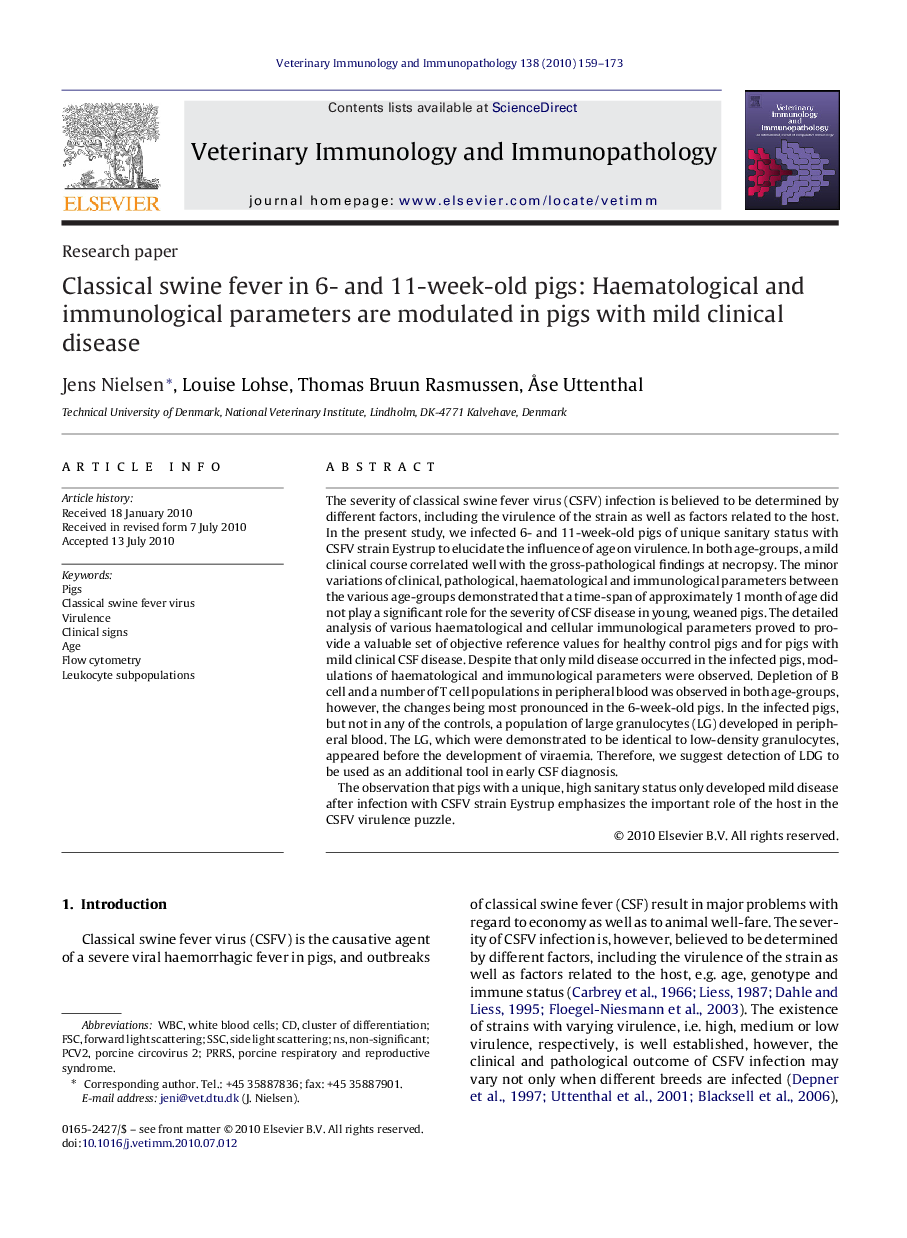| Article ID | Journal | Published Year | Pages | File Type |
|---|---|---|---|---|
| 2462412 | Veterinary Immunology and Immunopathology | 2010 | 15 Pages |
The severity of classical swine fever virus (CSFV) infection is believed to be determined by different factors, including the virulence of the strain as well as factors related to the host. In the present study, we infected 6- and 11-week-old pigs of unique sanitary status with CSFV strain Eystrup to elucidate the influence of age on virulence. In both age-groups, a mild clinical course correlated well with the gross-pathological findings at necropsy. The minor variations of clinical, pathological, haematological and immunological parameters between the various age-groups demonstrated that a time-span of approximately 1 month of age did not play a significant role for the severity of CSF disease in young, weaned pigs. The detailed analysis of various haematological and cellular immunological parameters proved to provide a valuable set of objective reference values for healthy control pigs and for pigs with mild clinical CSF disease. Despite that only mild disease occurred in the infected pigs, modulations of haematological and immunological parameters were observed. Depletion of B cell and a number of T cell populations in peripheral blood was observed in both age-groups, however, the changes being most pronounced in the 6-week-old pigs. In the infected pigs, but not in any of the controls, a population of large granulocytes (LG) developed in peripheral blood. The LG, which were demonstrated to be identical to low-density granulocytes, appeared before the development of viraemia. Therefore, we suggest detection of LDG to be used as an additional tool in early CSF diagnosis.The observation that pigs with a unique, high sanitary status only developed mild disease after infection with CSFV strain Eystrup emphasizes the important role of the host in the CSFV virulence puzzle.
